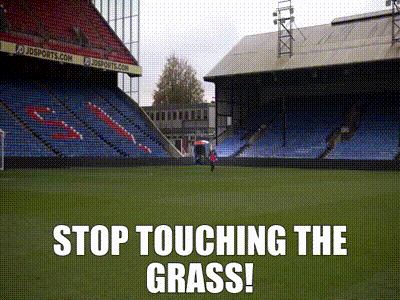Two Rules x Two Rules
Two simple rule sets—one for making friends, one for getting better sleep. Four rules to live by.
How to Be Liked
1. Ask Questions
Most people want to feel heard more than they want to hear you. Especially before they know you, they don’t really care what you have to say. They just want to feel like someone’s listening.
The end result? You score more points by asking questions than by answering them.
Even when someone asks you something, you don’t need to respond with an intimate answer. “Say less!” Let your curiosity do the talking. It’s better to act like your info is pricey. Don’t give away extra details for free. Spend time learning about the people around you. Mystery beats over-sharing.
2. Have “One” Interest (Stay in Your Lane)
There’s an IG influencer I follow—a Black guy (Chris CARESNONE The Babka King 👑) who reviews Jewish food. He’s great. Why? Because he does one thing: review Jewish food. He doesn’t divert.
The moment he starts mixing in posts about the Knicks, Yankees, politics—anything else—he’ll lose followers.
I had a lot of friends who went into sales after school, from cars to real estate. The most successful ones had lived in the same community for at least a decade. They wouldn’t have made it in a new neighborhood. Their success was tied to a niche—church, music scene, fraternity, or another tight-knit group. That’s how they built trust.
Yes, big celebrities can afford three or four unique interests—let’s say veganism, environmental activism, local politics. They earned it. They started with just acting, singing, comedy, showing off their booty. Secondary interests come when they can afford to lose fans. Yes, you have more interests, and so do they. But too many messages dilute their influence. So even they keep it limited.
I’m not recommending these rules for a well-balanced or fulfilling life. I’m just saying: this is what works if you want to make friends. Pick one hobby, go to a relevant store, ask a million questions until you’re a domain expert, and you will have friends.
How to Sleep
1. Let Your Body Temperature Drop
I always lower the AC a degree or two before bed.
It’s science: lowering body temperature has been shown to help you fall asleep and improve sleep quality. Your core temperature naturally drops in the evening, signaling it’s time to sleep. Maintaining a cooler environment supports that process. You want a cool bed and pillow, not a sauna.
How do you do it? Experts recommend keeping bedroom temperatures between 60°F and 67°F (15.6°C to 19.4°C). Military personal might advise if you take a warm bath 1–2 hours before bed, your body cools down afterward, making you even sleepier. I’m a post-workout shower-er, so I rely on the AC. My brother-in-law has a special mattress cover that changes temperature. Other gadgets and gizmos exist.
And if you don’t believe me that it’s this simple here’s some further reading:
Sleep and Thermoregulation: This study explores how behaviors that promote thermal efficiency, such as warmth-seeking and nest building, facilitate sleep. It highlights that skin warmth induces non-rapid eye movement (NREM) sleep and body cooling via neural pathways connecting skin sensation to the hypothalamus.
The Temperature Dependence of Sleep: This research indicates that small increases in skin temperature can shorten sleep latency without altering core temperature. It also notes that disruptions in peripheral vasodilation are linked to longer sleep latencies, emphasizing the importance of thermoregulation in sleep initiation.
Enhanced Conductive Body Heat Loss During Sleep Increases Slow Wave Sleep: The study demonstrates that conductive body cooling during sleep can promote slow-wave sleep (N3) and reduce heart rate. This suggests that body cooling during sleep is a reliable method for enhancing deep sleep stages.
2. Believe Rule 1 Will Work
Despite the science behind Rule #1, none of it matters without this second rule.
If you believe you have incurable insomnia, falling asleep will be harder. If you believe you will fall asleep, it gets easier. It’s not a knock on sleep disorders—it’s common sense. You have to be relentlessly optimistic about your ability to sleep. Fake it til you make it.
Mindfulness is a common sleep aid. Some people count sheep. Others use shifting mantras, like:
“I am going to sleep.” (x5)
“I am falling asleep.” (x5)
“I am asleep.” (x5)
I don’t like talking to myself, so I’ve just spent years and years telling people how great of a sleeper I am until it became true. After a while, you build patterns that make it easier. Years of late nights can reset your body’s clock, making insomnia more likely. But get back to a consistent bedtime—ideally around 10 p.m.—and things start to improve.
That’s why you need both rules: cool down, and believe you will sleep.
A Note
Being liked, remembered, and well-rested isn’t always the most interesting way to live. Sometimes it’s more fun to interrupt, overshare, and stay up way too late chasing an idea (or a bad decision). Some of my favorite people are friendless weirdos and insomniacs.
Break the rules when you feel like it. The best stories rarely start with “I played it safe and went to bed on time.”





